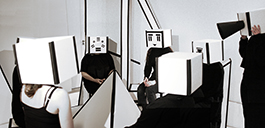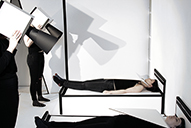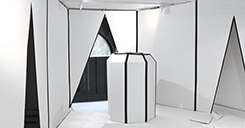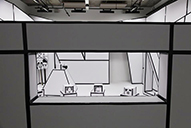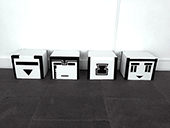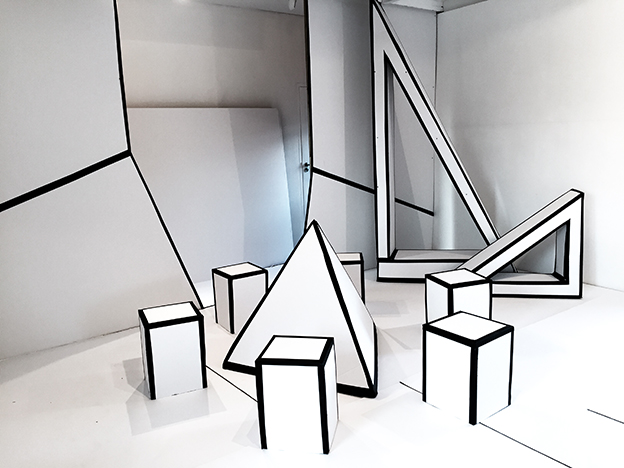
The Strategic Sanctuary for the Destruction of Free Will was first created as part of a solo exhibition at Pump House Gallery, London, in 2015. The installation spanned the four floors of the gallery, and formed the set for a film screened with a live score by Cabiria. Filmed as a Progress Report, the film evolved over the course of the exhibition. A second iteration, The Second Annual Report, is being presented at Centre Clark, Montreal, with a live performance. The work deals with spaces of confinement, explored as architecture through the transformation of the space into a white ‘padded cell’ and in relation to interiority through references to pharmaceutical ‘mood stabilizers’. A white cardboard skin covering the gallery produced a spacesomewhere between the psychiatric institute and an LSD cult. The installation explored the tension between an ethos of self-expression, flexibility and individualism and a regulating system that monitors one’s well-being and suitability for work, a tension that can be seen in the contemporary double role of drugs, which function both as recreational pleasure inducers and as highly normative regulators of social behavior through a variety of prescribed anti-anxiety and depression substances. The film and live performance made explicit the relationship between internal and external restrictions, interrogating the processes and environments that enable the production of subjectivity and the way in which, under neo-liberalism this is becomes a form of valorised labour. Here group therapy room and prison cell, workstation and recreational space merge into each other. If subjective difference is encouraged to a degree of atomisation, the work asks what kinds of collective actions and forms of resistance are possible.
The project was supported by The University of Reading, Royal College of Art and the CASS School of Art
